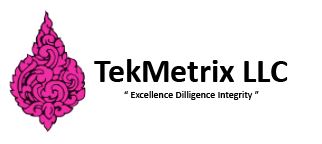Optimizing Trade Promotion Management
The Consumer-Packaged Goods industry is a digital intensive industry. Manufacturing, Supply Chain and Finance processes are automated under one SAP enterprise platform. There is a central warehouse for reporting and analytics at the SKU level. During the daily selling process trade discounts are given to various retailers. These trade discounts are complex and involve legacy discounts, inflated rebates, loyalty programs, price changes, allowances, on and off invoice rebates, fines, freight, swell and others. Some large global CPG organizations have 100+ promotion expense and spend types.
These promotion and expense types must be planned annually with Key Account Managers who are responsible for the retail stores. This is a complex data intensive process to setup and approve annual trade budgets. P&G had net sales of $76.118 Billion in 2021 and spends 20% of sales on promotions. With the Global CPG companies selling well over $1 Trillion annually trade spend is a large cost. Not to forget the labor cost and lost productivity of creating and maintaining annual trade plans.
Incremental Volume and Trade Promotion Spend
Approximately 3 months before the beginning of the new fiscal year Key Account Managers, Finance, Sales Leadership and Supply Chain leaders must submit their data. Supply chain management submits their baseline volume that they expect to manufacture and sell. Key Account Managers organized by responsibility area (customer) layer on top of the base line volume plan their promotion types, validity dates, expense types, sell in, sell out and uplift expectations. These are negotiated annual contracts that the Key Account Managers must maintain. The promotion expenses are accrued as a lump sum and at an account, product level. As the year progresses, selling occurs and on the OTC process the trade discounts executed and settled.
For Many CPG organizations this process is Excel intensive for each account manager. Where promotions are setup in enterprise software the effectiveness of the spend is not readily apparent. Billions of records are stored in data warehouses. AI can be used to optimize the effective use of trade promotion spend.

Hierarchies |
Sales Volume Forecast |
Plan Analytics |
| Pricing Architecture | Baseline Volume Forecast | Volume Metrics |
| Trade Funding Guidelines | Promotion Volume Forecast | Revenue Metrics |
| Reporting Structures | ||
Optimization Model Hypothesis
Trade promotion spend is for a customer product SKU combination. There is a 12 month forecast for TPM ROI and an actual TPM ROI based on execution of the trade promotion. The mathematical algorithms of AI can be used to optimize the ROI of trade promotion spend using the set of equations below:
- Baseline Volume from Previous Year and Adjusted to Current Forecast Year
- Incremental Volume Planned and Tracked Using Latest Estimates, Actualized as Promotion Executes
- Baseline Product Price is Planned for the Forecast Year
- Incremental Revenue = Incremental Volume x Baseline Product Price
- ROI = (Incremental Profit – Promotion trade spend) / Promotion Trade Spend
- Incremental Profit = (Incremental Volume) x (Variable Contribution Margin)
- Promotion Trade Spend = (Total Volume) x (Variable Costs) + Fixed Costs
- Variable Contribution Margin = Customer Specific Price - (Material + Labor + Operating Expense + Freight Expense + Warehouse Allocation)
- Labor and Operating Expenses are Variable and Allocated
Experimental Design and Testing of Hypothesis
The mathematics of AI are readily available in most CPG companies enterprise software. It remains unused as most users in the domain do not understand the technology. To test the AI optimizers a team of a few Key Account Managers, Plant representatives and Finance SMEs need be organized with specific roles and responsibilities. We will choose a few brands, top sellers and less value-add brands to include in the test. An application prototype will be built and the test would be months in duration and most effectively performed for all 4 seasons.
Testing will be by variance analysis. That is, what was the ROI of the spend in previous years and what is it with the TekMetrix AI optimizer in place for the same customer, product, plant combinations. The objective is to maximize incremental sales. The optimizing decision variables in the equations are:
- Trade Promotion Spend for Each Customer Product Combination
- Incremental Volume due to the Promotion
- Baseline Customer Product Sales without Promotions
- Total Sales for the Customer Product During the Promotion
- Cost of Trade Promotion by Discount Type
Constraints are:
- Trade Promotion Spend
- Customer Specific Price
- Incremental Sales = Total Sales - Baseline Sales
- Total Sales During Promotion = Baseline Sales + Incremental Sales
- Baseline Volume
- Material Costs
- Labor Costs
- Operating Expense
- Freight Expense
- Warehouse Allocation
What discount type is most effective in improving incremental volume? Are the customers actually using the promotions offered (usage verses offered)? After the ROI is clearly demonstrated a larger project can be organized and funded for global rollout.
TPM Processes
Opportunities for Trade Promotion Management Optimization lay not only in manufacturing but across all the TPM processes.
- Budgeting and Allocation:
- Three months before the new fiscal year, this initial phase involves creating trade budgets and strategically allocating them across specific accounts
- Promotion Planning and Forecasting:
- A promotional calendar forecast for each retail customer and product SKU. This involves sales, expenditure, and profits, creating a comprehensive business plan with an SKU P&L
- Execution:
- The promotional plans are communicated to retailers, provide them with necessary materials, and meticulously track the outcomes. Larger retailers with purchasing power communicate their terms for TPM.
- Reconciliation:
- Match the spend with the corresponding activity. This phase validates and balances financial deductions associated with these expenses in the system.
- AI and ML Modeling:
- Our tools fine-tune predictions, optimize resource allocation, and harmonize financial accountability

